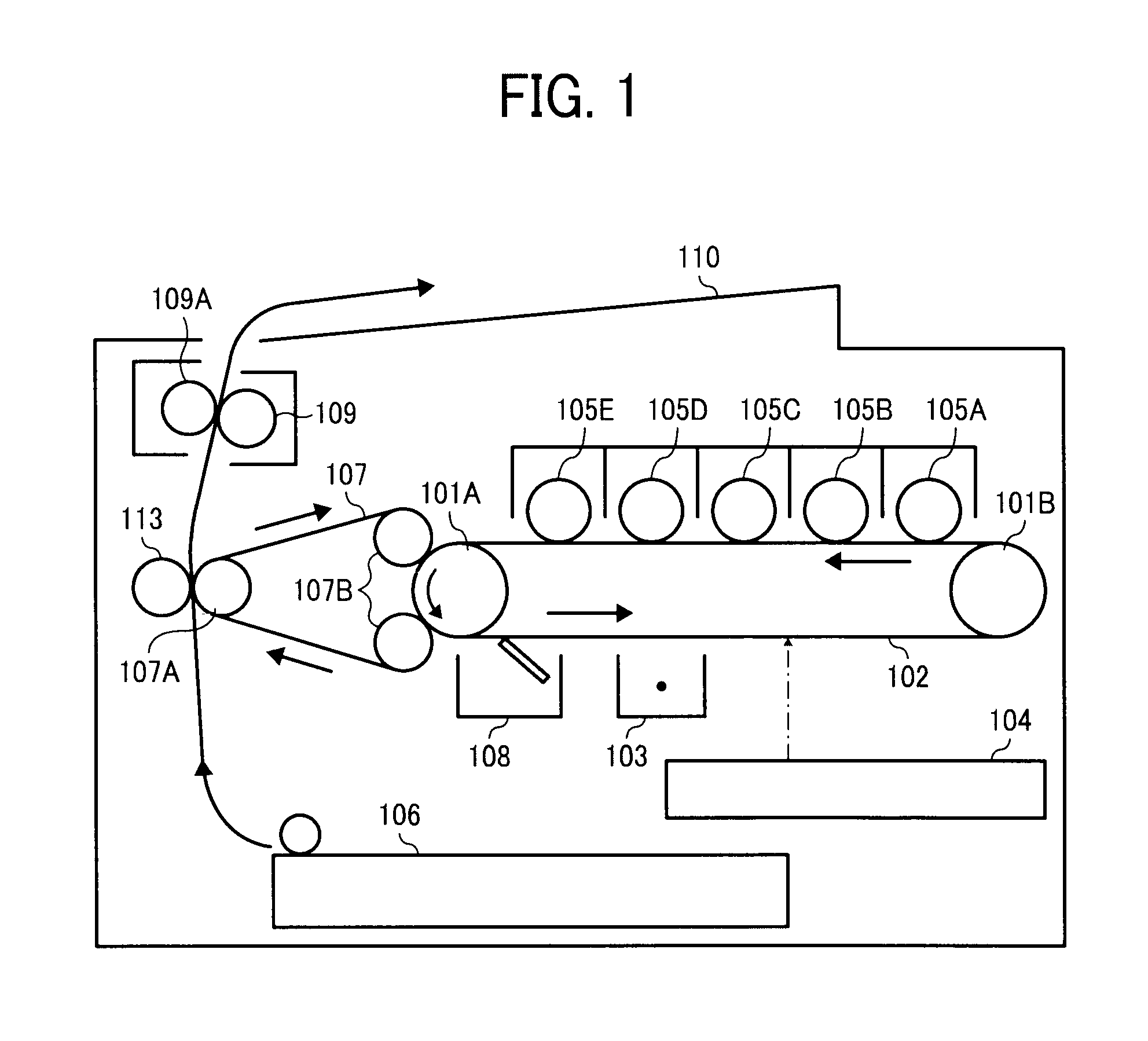Image forming method, two-component developer, image forming apparatus and process cartridge
a technology of image forming and two components, applied in the direction of electrographic processes, electrographic processes using charge patterns, instruments, etc., can solve the problems of inability to produce a small number of prints, deterioration of the toner, and deterioration of the charging ability of the carrier
- Summary
- Abstract
- Description
- Claims
- Application Information
AI Technical Summary
Benefits of technology
Problems solved by technology
Method used
Image
Examples
example 1
(1) Preparation of Developers
[0243]The following components were mixed.
Transparent toner 1 5 partsCoated ferrite carrier95 parts
[0244]The mixture was mixed for 5 minutes using a TURBULA MIXER mixer from Willy A. Bachofen AG (WAB), which was rotated at a revolution of 48 rpm, to charge the toner.
[0245]Thus, a developer T1 including the transparent toner 1 was prepared.
[0246]The procedure for preparation of the developer T1 was repeated except that the transparent toner 1 was replaced with the black toner 1, the magenta toner 1, the cyan toner 1 or the yellow toner 1 to prepare black, magenta, cyan and yellow developers K1, M1, C1 and Y1.
(2) Preparation of Supplementary Developers
[0247]The following components were mixed.
Transparent toner 180 partsCoated ferrite carrier20 parts
[0248]The mixture was mixed for 5 minutes using a TURBULA MIXER mixer from Willy A. Bachofen AG (WAB), which was rotated at a revolution of 48 rpm, to charge the toner.
[0249]Thus, a supplementary developer TS1 i...
example 2
[0266]The procedure for preparation and evaluation of the developers in Example 1 was repeated except that the transparent toner 1 was replaced with the transparent toner 3.
example 3
[0270]The procedure for preparation and evaluation of the developers in Example 1 was repeated except that the solid transparent toner image was initially formed on the recording material and then a solid color toner image was formed thereon (i.e., the positions of the transparent toner image and a color toner image are reversed).
PUM
| Property | Measurement | Unit |
|---|---|---|
| temperature | aaaaa | aaaaa |
| thickness | aaaaa | aaaaa |
| temperature | aaaaa | aaaaa |
Abstract
Description
Claims
Application Information
 Login to View More
Login to View More - R&D
- Intellectual Property
- Life Sciences
- Materials
- Tech Scout
- Unparalleled Data Quality
- Higher Quality Content
- 60% Fewer Hallucinations
Browse by: Latest US Patents, China's latest patents, Technical Efficacy Thesaurus, Application Domain, Technology Topic, Popular Technical Reports.
© 2025 PatSnap. All rights reserved.Legal|Privacy policy|Modern Slavery Act Transparency Statement|Sitemap|About US| Contact US: help@patsnap.com



